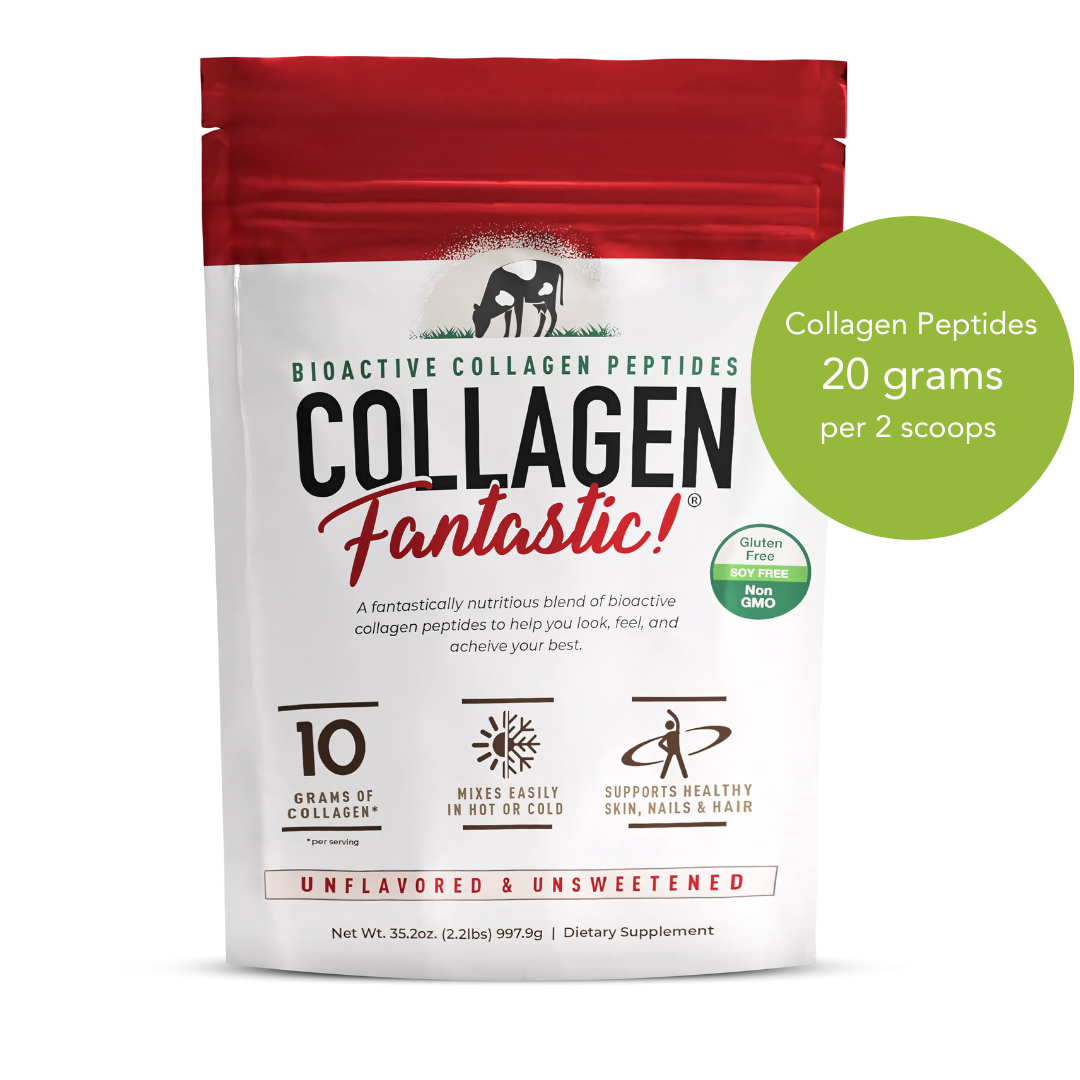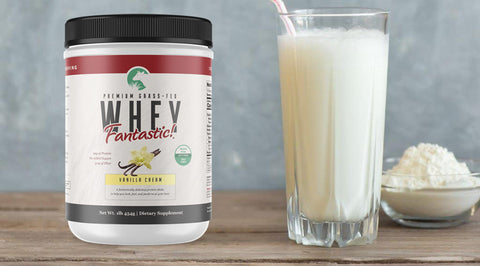If you’re looking for fast ways to burn fat, rumor has it that intermittent fasting is the ultimate cheat code. But what about when it comes to building muscle? Can intermittent fasting help with that too, or at least prevent muscle loss?
The short answer is yes. If you play your cards right, that is. And that’s exactly what this post is all about—showing you how to build muscle with intermittent fasting.
What Is Intermittent Fasting?

Intermittent fasting occurs when you have a fixed eating window (say, between 12 p.m. and 8 p.m.) and fast the rest of the day. There are many different types of intermittent fasting diets. Here are some of the more popular ones:
- 16/8 Intermittent Fasting: Also known as the Lean Gains Protocol, this intermittent fasting method is probably the most-known. You have an 8 hour eating window and fast for the remaining 16 hours of the day.
- 20/4 Intermittent Fasting: This is when you have only a 4 hour eating window and fast for the remaining 20 hours of the day.
- 5:2 Intermittent Fasting: You eat like normal 5 days out of the week and restrict your calories the other 2 days. For example, let’s say your normally eat 2,000 calories per day. You would eat this amount 5 days out of the week, then on the 2 fasting days, restrict your calories by about 500-600. On this method, it’s important not to fast on consecutive days.
- Alternate Day Intermittent Fasting: You alternate between days of eating like normal and fasting. Fasting days typically involve a small meal.
- One Meal A Day Intermittent Fasting: You eat one large meal during the day. This is essentially a 23/1 fast.
When thinking about intermittent fasting and building muscle, success comes from picking the plan that fits your goals and lifestyle. For example, one meal a day intermittent fasting probably won’t be ideal for you if you like having multiple meals throughout the day. It might take some experimenting with the different types to see which one works best.
Intermittent Fasting for Muscle Gain
The best plan to build muscle with intermittent fasting focuses on both your diet and exercise routine. There’s a saying that results are 80% what you eat and 20% workouts, so let’s start with the nutrition side of things.

Eating for Muscle Growth
Your workouts are important but nutrition is the driving force when it comes to building muscle while fasting. Losing weight happens when you’re in a calorie deficit, which means you’re burning more calories than you’re consuming. But you’re looking to build muscle, and that happens when you’re in a caloric surplus (consuming more calories than you burn off).
Eat more than you’re burning off? You might be thinking to yourself that this whole muscle gain-intermittent fasting thing sounds pretty easy. And it’s true that eating whatever you want will put you in a surplus alright.
… A surplus of excess fat around your waistline and plenty of other places you don’t want! Being in a caloric surplus isn’t an excuse to throw caution to the wind. Intermittent fasting only works if you’re fueling up on the proper foods.
First and foremost, you want to make sure you’re getting plenty of protein from quality sources. Protein repairs damaged muscles, helps the body recover, and overall, it’s the most important macronutrient for muscle growth. A good starting point for protein is about 1 gram per pound of bodyweight.
Here’s a list of some blue-chip protein options:
- Chicken breast
- Turkey breast
- Fish (such as salmon, tilapia, cod, and halibut)
- Egg whites
- Canned tuna
- Lean beef
- Pork tenderloin
- Greek yogurt
- Cottage cheese
- Whey protein
- Beans and lentils
- Seitan
- Tofu, tempeh, and edamame (come from soybeans)
Some things on the list take more time preparing than others. If you’re ever in a time crunch, or just struggle getting enough protein in throughout the day, protein shakes are a convenient alternative. Our Whey Fantastic is an easy way to sneak some more protein in and fuel your muscle-building goals—all while while enjoying a tasty shake, smoothie, or another healthy snack.
But don’t just take our word for it! Check out some of these healthy, mouthwatering recipes:
Did we mention our protein powder is 100% certified grass-fed?
Next, you have your carbs, which supply your body with glycogen and give you energy. The focus should be on complex carbs rather than simple carbs, which have less nutritional value. So, foods like oats, brown rice, quinoa, beans (black and kindey), and sweet potatoes, just to name a few.
Last but not least, you want to include some healthy fats in your diet, such as avocado, chia seeds, or flaxseed. Fats help your body produce testosterone and growth hormone, which are invaluable for building muscle. Also, be mindful of liquid calories. Swap out sugary drinks for H2O and other low-calorie beverages.
Meal Timing With Intermittent Fasting
Since intermittent fasting calls for a limited eating window, you might want to consider planning your meals around your workout schedule. It doesn’t necessarily matter when you eat, but adequate timing of your meals can make you feel less hungry, get in better workouts, and maximize your intermittent fasting muscle gain results.
Everyone’s different, and what works for you might not work for someone else. For example, early morning workouts on an empty stomach and not breaking your fast until the afternoon could be easy for you. Others, not so much. And if that’s the case, hold off on working out until later in the day when you break your fast.
Build Muscle by Lifting Weights
Muscles get revealed in the kitchen, but they’re made in the gym. No matter your age, gender, or the intermittent fasting method you choose, strength training is a necessity for building muscle. And no, you don’t have to be super into bodybuilding or absolutely destroy yourself in the gym to build muscle with intermittent fasting. Above all else, you just need to be consistent. Follow a strength training program that emphasizes progressive overload (which helps you get stronger over time and build more muscle).

Two hormones in particular play a key role in muscle building and recovery—testosterone and human growth hormone. Fasting prompts your body to produce more of these two hormones.
One study found that fasting can raise your testosterone levels by 180 percent. Another study found that a 24-hour fast can supercharge your HGH levels too. Men’s levels increased by an eye-popping 2,000 percent, while women’s increased by 1,300 percent.
What’s more is that research has shown intermittent fasting reduces insulin resistance, which means your body doesn’t retain leftover sugar as body fat, and instead, has more energy to fuel your muscles.
What about the other side of the coin with fat loss? Is fasting without losing muscle possible? In one study, participants were broken out into two groups. One group followed a calorie-restricted diet, while the other group intermittent fasted. Want to guess the results?
The group that followed intermittent fasting improved their lean mass by 2.2% while the group on a calorie-restricted diet only achieved a 0.5% increase. Not only that, but the group that fasted lost two times more belly fat than the other group.
Takeaways
Intermittent fasting has become wildly popular in the fitness community. Known primarily for helping with weight and fat loss, it’s definitely more than possible to build muscle with intermittent fasting. When you combine proper nutrition with a killer strength training routine, intermittent fasting makes for some pretty awesome results.
Here’s a quick summary on how to do that:
- Be in a caloric surplus (which means you’re consuming more calories than you burn off). This isn’t a free pass to just eat whatever you want. Focus on eating enough lean protein to fuel muscle growth, and supplement with complex carbs for energy, as well as healthy fats for nutrient absorption.
- Keep in mind that when you fast, your body produces more testosterone and growth hormone, which are key building blocks to muscle growth.
- Start a strength training routine that emphasizes progressive overload to get stronger over time and build more muscle.
About the Author:
Chad Richardson is a freelance writer from Cincinnati, OH. He enjoys creating content that helps people get in shape and live healthier lives. When he’s not behind his computer, you can find Chad at the gym, out with friends, or being a homebody binging on Netflix.
References:
https://pubmed.ncbi.nlm.nih.gov/2686332/
https://www.sciencedaily.com/releases/2011/04/110403090259.htm












